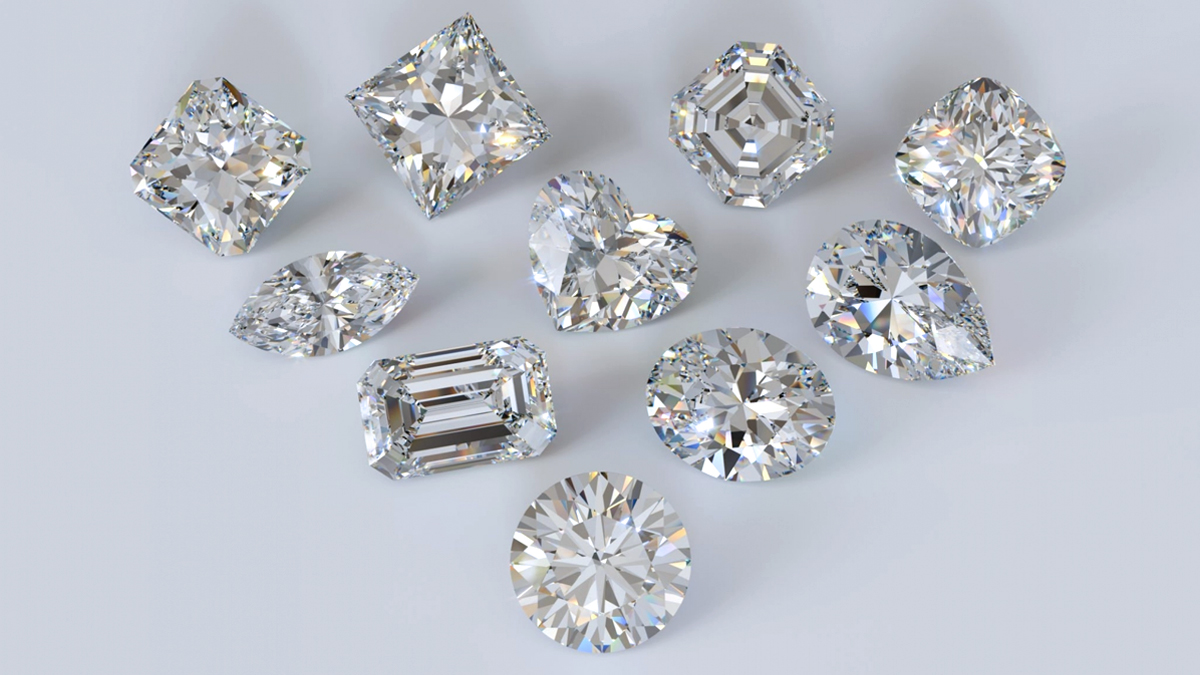Lab-grown diamonds have become more popular in recent years. These diamonds are also known as cultured diamonds, man-made diamonds, and lab-created diamonds.
Most people understand that diamonds can be grown in a laboratory. Advanced technology is used to replicate the natural process of diamond formation in the earth. However, after that, it can all get confusing, especially considering their price differences.
The lab grown diamond price will vary. It depends on where you buy it. It can also depend on whether you order a mass-produced model or have one custom made. The cost of those acquired from an online store and a physical store will probably vary as well.
Before you begin to shop for diamonds, be sure you understand the 4Cs. The diamonds are graded according to cut, clarity, color, and carat weight that influences its value. Colorless diamonds with a precise cut and few flaws are the most precious, but it all comes down to personal opinion. Overall, we recommend selecting the best cut grade available within your budget.
One gemologist grades a diamond for color and clarity, then sends it to another for a second assessment. This second grader's thoughts are formed completely independently of the first. So, in this article we have explored all the information you need to know about the cost of lab-grown diamonds.
A History of Lab-Grown Diamonds
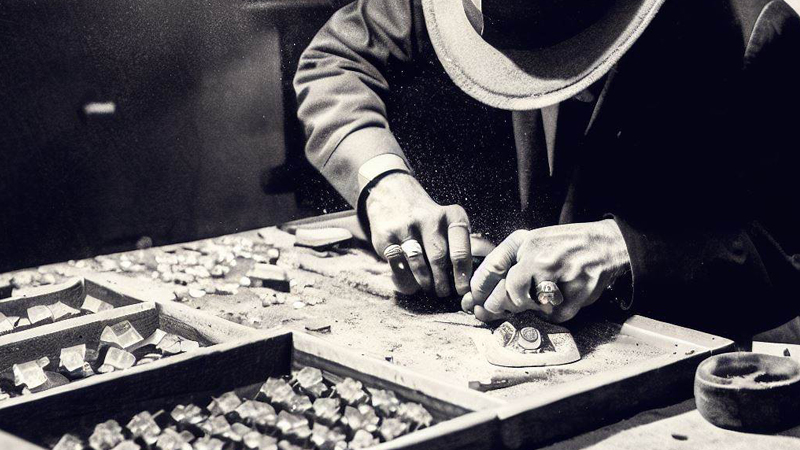
Lab grown diamonds have been invented back to the mid 20th century around the 1950s. Two scientists, Robert H. Wentorf Jr. and Tracy Hall, working for General Electric (GE) accomplished something remarkable in 1954. They created diamond in a laboratory under the codename "Project Super Pressure". Replicated the conditions below the earth's mantle were diamonds form naturally.
Wentorf employed the technique of utilizing a high degree of heat and pressure in a special type of electric furnace. Using a high-pressure belt press, they subjected small seed crystals to temperatures of 1,600º C and pressure of 100,000 atm.
Both HPHT and CVD technology are used today to manufacture lab-grown diamonds. In the early 2000s, diamond industry rapidly began to expand using advanced technology which reduced the lab grown diamond production costs.
Lab diamonds slowly entered the diamond market. They gained popularity among people who wanted eco-friendly and conflict free diamonds. Lab grown diamonds are often much cheaper than natural diamonds. They are available in a wide selection of shapes, colors, and grades.
Benefits of lab Grown Diamonds
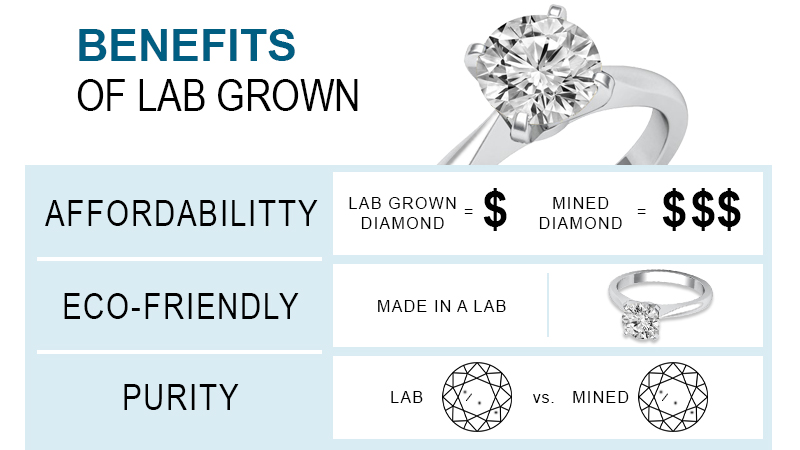
Lab grown diamonds have multiple benefits over their natural counterparts. A lab grown diamond is just as stunning, brilliant, and captivating as a natural diamond. They are therefore ideal for use in creating fine jewelry, like diamond engagement rings.
Manufactured diamonds are more ecologically friendly and have fewer adverse implications for the environment than naturally sourced diamonds. Lab diamonds are purer than other diamonds. They lack dirt and impurities, and have fewer signs of strain. Because these diamonds are made under a controlled environment.
Lab grown diamonds are more affordable and cause no environmental damage unlike naturally mined diamond. Even naturally mined diamonds carry a history of human right violations and child labor often called 'blood diamonds'. Many countries worked together through the Kimberley Process to prevent the sale of conflict diamonds.
It is easier to make superior quality diamonds by growing them inside the controlled laboratory. They are therefore more likely to get better color and clarity grades.
A lab grown diamond is a great alternative to purchasing a more expensive natural diamond. Simply said, you'll get more value for your money. Lab grown diamonds make excellent center stones for engagement rings. Whether you're buying to surprise someone special or for yourself, there are many reasons to consider using one.
Are Lab-Grown Diamonds worth Anything?
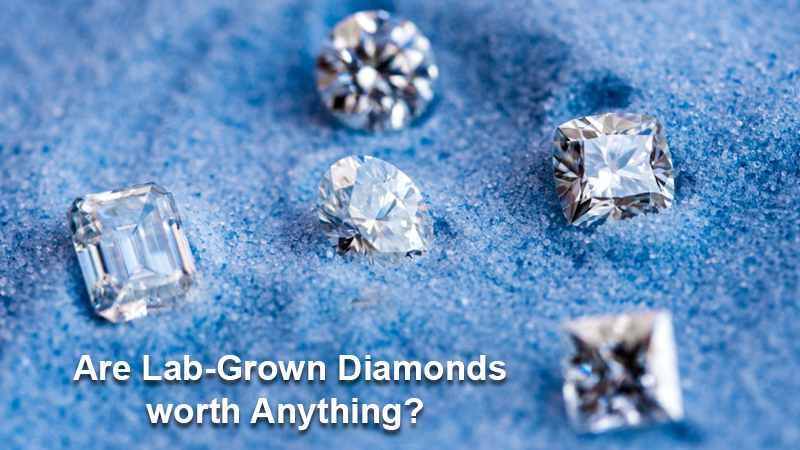
There are still many misconceptions about lab grown diamonds. Some people wonder if they're real because they're also known as synthetic diamonds. Yes, Lab grown diamonds are the real diamonds that are manufactured in a laboratory replicate the process of natural diamonds. Lab grown diamond test as positive on diamond tester.
Purchasing a high quality and stunning lab gown diamond, on the other hand, remains a wise and proven investment. since lab grown diamonds have the same chemical and physical properties as natural diamonds.
Lab grown diamonds and natural diamonds are equally durable. Both rate 10 on the Mohs hardness scale. The value of diamonds grown in labs is usually lower than that of diamonds taken from the earth.
The cut of a diamond influences its brilliance or shine. A larger diamond carat weight can appear smaller if its cut is poor. As a result, the higher the quality of the cut, the more costly the diamond.
Cut is frequently confused with diamond shape but refers to the facets of a diamond. A colorless diamond is more precious than a nearly colorless diamond. This diamond is more valuable than one that is faintly colored with hints of yellow.
The cost of a lab grown diamond may be affected by its shape. This has nothing to do with one shape being more "valuable" than another. Rather, it has to do with how Cs differ based on the shape of the diamond.
Lab grown diamonds usually bring minimal returns when reselling whereas natural diamonds hold between 25-50% of their initial value. You may still make a small profit when selling your lab grown diamond.
Prices of Lab-Grown Diamonds
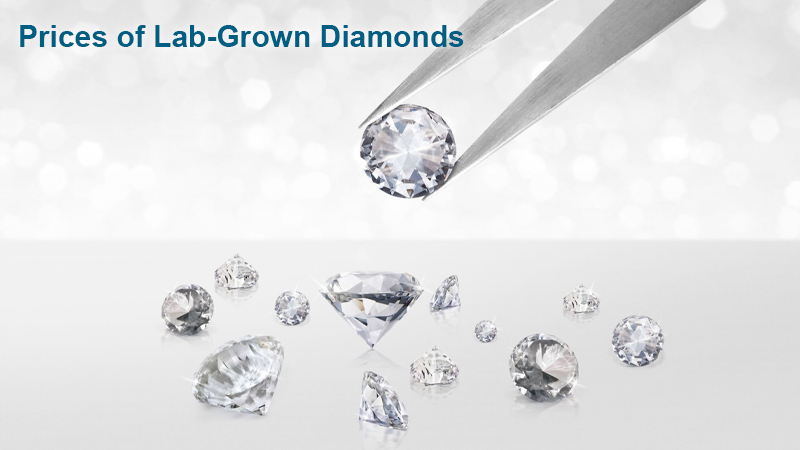
Lab-grown diamonds are more cost-effective than natural diamonds. Synthetic diamonds are typically priced between 40-50% lower than natural diamonds of comparable size and quality. This means that you may purchase a real diamond for roughly a third of the cost.
A 1-carat natural diamond with SI1 clarity typically costs $6,100. Lab-grown diamonds with the same rating cost around $2,300 per carat.
A 2-carat lab-grown diamond will typically cost about the same as a 1-carat of natural diamond. You can purchase much larger and better-quality diamonds for a given budget.
| Natural Diamond | Lab Grown Diamond | |
|---|---|---|
| 1.0 carat round diamond | $6,200 | $1,600 |
| 1.0 carat princess diamond | $4,800 | $1,800 |
| 1.5 carat round diamond | $15,000 | $2,600 |
| 1.5 carat oval diamond | $13,500 | $2,800 |
| 2.0 carat round diamond | $28,000 | $4,700 |
Natural Diamond
Lab Grown Diamond
1.0 carat round diamond
$6,200
$1,600
1.0 carat princess diamond
$4,800
$1,800
1.5 carat round diamond
$15,000
$2,600
1.5 carat oval diamond
$13,500
$2,800
2.0 carat round diamond
$28,000
$4,700
*Pricing is based on the average market price of online diamond retailers in 2023.
Conclusion
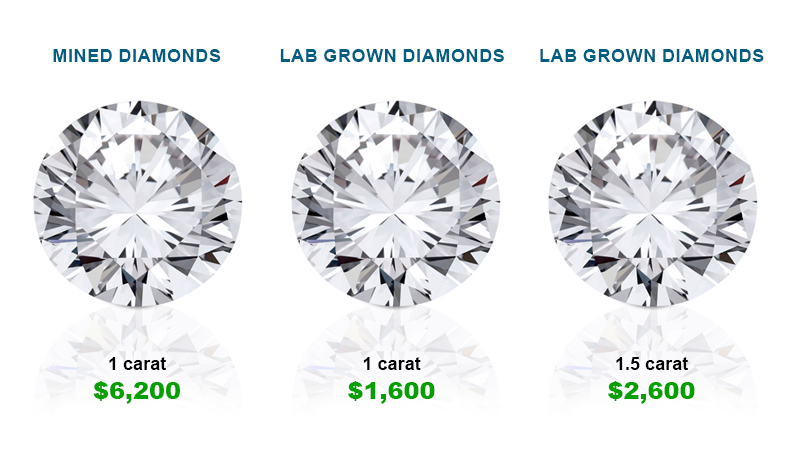
Lab-grown diamonds test as real as natural diamonds on diamond testers. They contain the same properties as diamonds formed under the earth's surface.
Lab-grown diamonds are manufactured using advanced technologies. This means there is no environmental or ethical harm. This makes them typically more affordable than natural diamonds.
Lab-grown diamonds are typically 40-50% cheaper than natural diamonds. Like natural diamonds, lab diamond prices can change depending on the market. The price of lab-grown diamonds is likely to decrease. This is due to advancements in technology and the rising popularity of lab-grown diamonds.
A diamond purchase is a big investment. Therefore, it is important to learn how to find the best diamond. Additionally, it is important to know where to get the best value for your money.
We hope we've helped you to understand the cost of lab grown diamonds. A lab diamond's value ultimately depends on the buyer's personal preferences. It's a big decision to purchase a diamond. So, spend some time to learn and understand about your requirements

